I’ve always been fascinated by the serene, minimalist aesthetic of Japanese interiors, and tatami mats are at the heart of that vibe. Their soft, natural texture and subtle grassy scent scream authenticity, but let’s be real—tatami mats aren’t for everyone.
They’re expensive, high-maintenance, and not always practical for modern homes. So, I set out to explore alternatives that could mimic the look, feel, or function of tatami mats while fitting my lifestyle and budget.
Below, I’ll share my findings, breaking down each option with its pros, cons, and why it might (or might not) work for you. This is my personal take, grounded in research and a bit of trial-and-error, to help you find the perfect tatami substitute.
Why Look For Tatami Mat Alternatives?
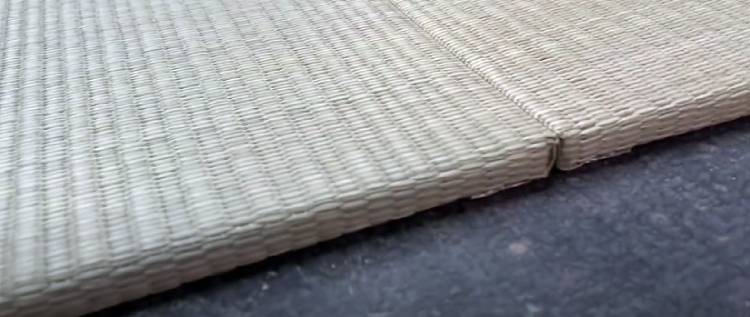
Before I get into the alternatives, let’s talk about why I even started this search. Traditional tatami mats, made from woven rush grass (igusa) over a rice straw core, are gorgeous but come with challenges.
They’re pricey—often $100-$200 per mat—and require regular cleaning to prevent mold, especially in humid climates. They also wear out over time, needing replacement every few years if heavily used. Plus, they’re not the easiest to integrate into non-Japanese-style homes.
I wanted something that captured the essence of tatami—comfort, natural materials, and that cozy, grounded feel—without the hassle or cost. Here’s what I found.
Alternatives To Tatami Mat
Here’s the full lineup of tatami mat alternatives I explored, each offering a unique spin on the traditional Japanese flooring:
- Goza Mats: Lightweight, woven rush grass mats that mimic tatami’s top layer. Affordable ($30-$50) and portable, they’re great for temporary setups but lack cushioning for heavy use.
- Cork Flooring: Eco-friendly, springy, and durable, cork tiles ($3-$8 per square foot) offer a natural look and sound-dampening qualities. Less soft than tatami but perfect for modern homes.
- Bamboo Mats: Sleek, sustainable, and moisture-resistant, these mats ($20-$60) are stylish but thinner and harder than tatami, better for decor than comfort.
- Foam Tiles: Budget-friendly ($1-$2 per square foot) and cushioned, EVA foam tiles are customizable and easy to clean but lack tatami’s natural aesthetic.
- Natural Fiber Rugs: Jute, sisal, or seagrass rugs ($50-$300) bring an organic feel but can be rough and prone to staining, best for low-traffic areas.
- Modular Carpet Tiles: Plush and customizable ($1-$4 per square foot), these tiles are durable and renter-friendly but lack tatami’s natural vibe.
- Rush Grass Rugs: Thicker than goza mats, these ($40-$100) offer tatami’s grassy look and scent with better durability, though they need padding for sleeping.
- Tatami-Style Vinyl Flooring: Synthetic tiles ($2-$5 per square foot) mimic tatami’s look with waterproof, low-maintenance benefits but lack natural warmth.
- Wool Area Rugs: Soft, durable, and cozy ($50-$200), these rugs add warmth but don’t match tatami’s firm texture, ideal for plush comfort.
Let’s elaborate these alternatives in detail:
Goza Mats: The Close Cousin
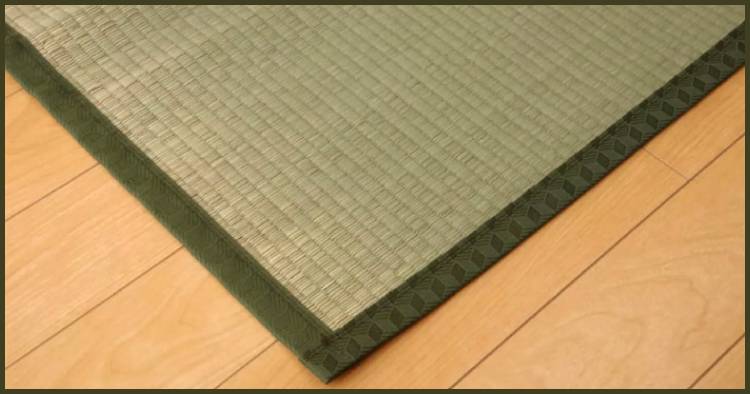
My first stop was goza mats, which are often confused with tatami but are a lighter, more flexible option. Goza mats are made from woven rush grass, just like the top layer of tatami, but they lack the thick, padded core. They’re essentially the top woven part of a tatami mat, making them thinner and more portable.
I tried laying a goza mat in my living room, and it instantly added that natural, earthy vibe I was after. It’s soft underfoot, smells faintly of fresh grass, and rolls up for easy storage. Goza mats are also way cheaper—think $30-$50 for a decent-sized one. They’re perfect for temporary setups, like a meditation corner or a guest sleeping area.
But here’s the catch: goza mats are thin, so they don’t offer the same cushioning as tatami. If you’re planning to use them with a futon for sleeping, you’ll need extra padding underneath, like a foam mattress topper.
They’re also less durable and can fray if you’re not gentle. I found goza mats ideal for low-traffic areas or as a decorative overlay, but they’re not a full-on tatami replacement for heavy use.
Cork Flooring: The Modern Minimalist
Next, I explored cork flooring, which surprised me with its versatility. Cork is a natural, renewable material harvested from tree bark, and it’s got a soft, slightly springy feel that reminds me of tatami’s gentle give.
I installed cork tiles in a small home office to test them out, and I was hooked.
Cork is warm underfoot, eco-friendly, and has natural sound-dampening qualities, making it great for apartments. It’s also more durable than tatami, resisting moisture and mold better in humid environments.
You can find cork tiles or rolls in various shades, from light tan to darker browns, which can mimic tatami’s neutral tones. Installation is straightforward—many cork products are peel-and-stick or click-lock, so I didn’t need to hire a pro.
The downside?
Cork isn’t as soft as tatami, so it’s not ideal for sitting or sleeping directly on the floor unless you add a rug or futon. It’s also pricier than goza mats, with costs ranging from $3-$8 per square foot. Still, I loved how cork blended tatami’s natural aesthetic with modern practicality, making it a strong contender for a permanent flooring solution.
Bamboo Mats: Sleek and Sustainable
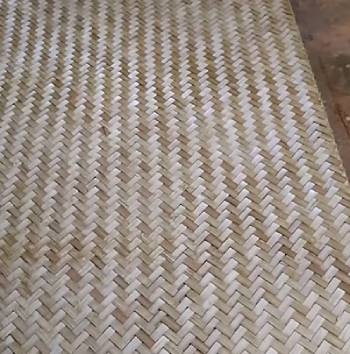
Bamboo mats caught my eye because they’re sustainable and have a sleek, modern look that nods to tatami’s natural vibe.
These mats are made from woven bamboo strips, often backed with felt or non-slip material.
I rolled one out in my bedroom to see how it held up.
Bamboo mats are lightweight, easy to clean, and surprisingly durable.
They’re resistant to moisture, which is a huge plus if you live in a damp climate where tatami might struggle. The texture is smooth and cool to the touch, which I found refreshing in warmer months. Prices are reasonable, typically $20-$60 depending on size.
However, bamboo mats are thinner and harder than tatami, so they’re not as comfortable for prolonged sitting or sleeping. I also noticed that cheaper versions can feel a bit plasticky, so I’d recommend splurging on a higher-quality one with a natural finish.
For me, bamboo mats worked best as a stylish, low-maintenance accent in a room, but they didn’t fully replicate tatami’s cozy feel.
Foam Tiles: Budget-Friendly Comfort
I wasn’t expecting much from foam tiles, but they turned out to be a game-changer for budget-conscious folks like me. These interlocking tiles, often used in playrooms or gyms, come in various thicknesses and textures.
I picked up a set of EVA foam tiles with a wood-grain or woven pattern to mimic tatami’s look.
The result? Surprisingly cozy. Foam tiles are soft, cushioned, and great for sitting or lying on, especially with a futon. They’re dirt-cheap—$1-$2 per square foot—and easy to install or remove.
They’re also water-resistant and easy to clean, which is a huge win for households with kids or pets. I loved how customizable they are; you can cut them to fit any space.
On the flip side, foam tiles don’t have the natural aesthetic or scent of tatami, and they can look a bit utilitarian. Some cheaper options also off-gas a chemical smell for a few days, so I aired mine out before use. For a practical, affordable alternative, foam tiles are hard to beat, especially for temporary or multi-purpose spaces.
Natural Fiber Rugs: The Versatile Wildcard
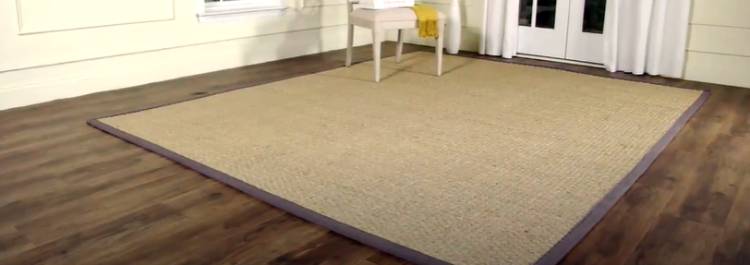
Natural fiber rugs, like jute, sisal, or seagrass, were my next experiment. These rugs are woven from plant-based materials, giving them a tactile, organic feel similar to tatami. I tried a jute rug in my dining area, and it brought a warm, grounded vibe to the space.
Jute and sisal rugs are durable, eco-friendly, and available in various textures and weaves that can approximate tatami’s look. They’re also widely available and come in a range of prices, from $50 for a small rug to $300 for a larger one. Seagrass, in particular, has a slightly glossy finish that echoes tatami’s rush grass surface.
The downside is that natural fiber rugs can be rough underfoot, especially sisal, so they’re not as comfy for floor-sitting lifestyles. They also stain easily and aren’t as soft for sleeping unless paired with a thick futon. I found these rugs best for adding a tatami-like aesthetic to a room without committing to the full experience.
Modular Carpet Tiles: The Customizable Choice
Finally, I tested modular carpet tiles, which are plush, square tiles you can arrange in any pattern. I chose a set with a low-pile, neutral-toned weave to mimic tatami’s soft texture. These tiles are a dream for anyone who loves customization—you can mix colors, create patterns, or replace individual tiles if they get damaged.
Carpet tiles are comfortable for sitting or walking, and they’re more durable than tatami, with no risk of mold. They’re also reasonably priced, starting at $1-$4 per square foot. I appreciated how easy they were to install and rearrange, making them perfect for renters like me.
The catch? They don’t have the natural, organic feel of tatami, and some designs look more corporate than cozy. Still, for a soft, practical alternative that’s easy to maintain, carpet tiles are a solid pick.
Rush Grass Rugs: The Tatami Doppelgänger
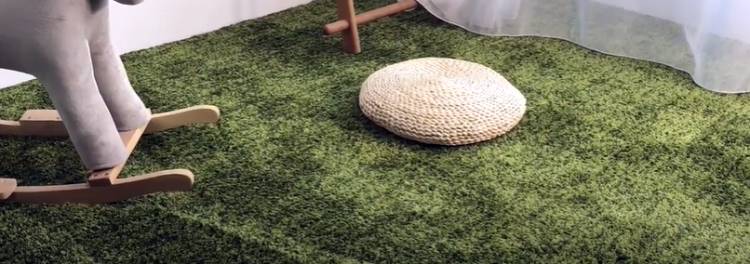
My next find was rush grass rugs, which are like goza mats’ beefier sibling. These rugs are made from the same igusa rush grass as tatami’s top layer but are woven into thicker, more durable rugs, often with a cotton or non-slip backing. I tested one in my guest room, and it was love at first step.
The texture is soft and slightly springy, mimicking tatami’s feel closely. The grassy scent was a nostalgic nod to traditional tatami, and the rug’s neutral tones blended seamlessly with my decor.
Rush grass rugs are more robust than goza mats, handling moderate foot traffic without fraying. They’re also reasonably priced, ranging from $40-$100 depending on size, and roll up for storage, making them renter-friendly.
The downside?
They’re still not as thick or cushioned as tatami, so for sleeping or prolonged sitting, you’ll need extra padding. They can also be prone to staining if not sealed properly, so I recommend a protective spray. For me, rush grass rugs were a fantastic middle ground—closer to tatami’s aesthetic than goza mats but easier to maintain.
Tatami-Style Vinyl Flooring: The Low-Maintenance Mimic
I stumbled upon tatami-style vinyl flooring while browsing for durable options, and it was a game-changer. These vinyl tiles or rolls are designed to look like tatami, complete with a woven rush grass pattern, but they’re made from synthetic materials. I installed a small section in my entryway to see how it held up.
The visual similarity to tatami is uncanny—guests thought it was the real deal! Vinyl is waterproof, stain-resistant, and a breeze to clean, making it ideal for high-traffic areas or homes with pets. It’s also budget-friendly, costing $2-$5 per square foot, and easy to install with adhesive or click-lock systems. The slight cushioning underfoot gave it a surprisingly cozy feel, though not as soft as tatami.
The catch is that vinyl lacks the natural warmth and scent of real tatami, and it can feel a bit artificial up close. It’s also not as eco-friendly as other options. Still, I found vinyl flooring perfect for anyone wanting tatami’s look with minimal upkeep, especially in spaces like kitchens or bathrooms.
Wool Area Rugs: The Plush Pretender
Wool area rugs were my final experiment, and they brought a whole new level of comfort to the table. I picked a low-pile wool rug with a neutral, woven texture to echo tatami’s organic vibe and laid it out in my reading nook.
Wool is soft, warm, and naturally durable, making it great for sitting or lounging. It’s also stain-resistant and easy to clean with a vacuum or spot treatment. The rug I chose had a subtle sheen that mimicked tatami’s natural glow, and it felt luxurious underfoot.
Prices vary widely—$50-$200 depending on quality and size—but you can find affordable options online.
The drawback? Wool rugs are pricier than foam tiles or goza mats, and they don’t replicate tatami’s firm, springy feel. They’re also heavier, so moving them around isn’t as easy. For me, wool rugs were a cozy, high-end alternative, best for adding warmth and comfort to a tatami-inspired space.
Frequently Asked Questions (FAQ)
You’ve got plenty of options! Goza mats are a lightweight, budget-friendly choice with a similar woven rush look. Cork flooring offers a natural, durable alternative with a soft feel. Bamboo mats are sleek and sustainable, while foam tiles provide affordable cushioning. Natural fiber rugs like jute or sisal bring an organic vibe, and modular carpet tiles let you customize your space. Each has its own strengths, depending on your needs for comfort, aesthetics, or maintenance.
Tatami mats are thick, padded mats with a rush grass (igusa) surface over a rice straw core, designed for flooring or sleeping. Goza mats are thinner, made only of woven rush grass without the core, making them more flexible and portable but less cushioned. Think of goza as the top layer of a tatami mat—similar look and feel, but not as substantial.
Nope, they’re not necessary! While tatami mats are traditional in Japanese homes for their comfort and aesthetic, modern alternatives like cork, foam tiles, or natural fiber rugs can replicate their vibe with less maintenance. It depends on your lifestyle—if you love floor-sitting or sleeping on a futon, you can achieve that with other materials.
Absolutely. A futon can be used on any flat, supportive surface, like foam tiles, a low platform bed, or even a thick rug. Tatami mats add cushioning and breathability, but they’re not essential. Just make sure your surface is firm enough to support the futon and soft enough to keep you comfy.
Wrapping It Up
My hunt for tatami mat alternatives was an eye-opener. Each option—goza mats, cork flooring, bamboo mats, foam tiles, natural fiber rugs, and carpet tiles—brings something unique to the table. Goza mats are great for a quick, authentic touch; cork and bamboo offer modern, eco-friendly durability; foam tiles and carpet tiles are budget-friendly and practical; and natural fiber rugs add versatility.
Ultimately, the best choice depends on your space, budget, and how closely you want to mimic tatami’s look and feel. For me, a mix of cork flooring and a goza mat overlay hit the sweet spot, blending style, comfort, and ease. What’s your pick?
